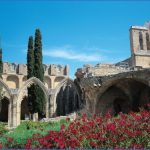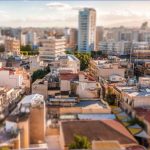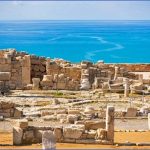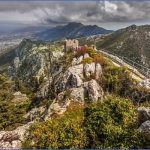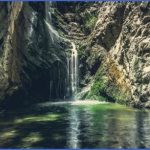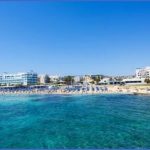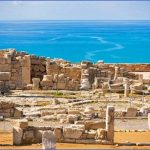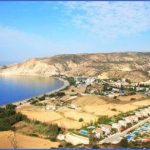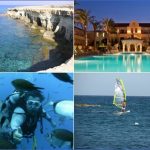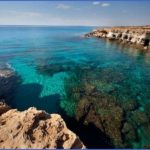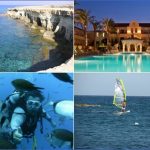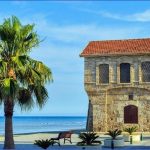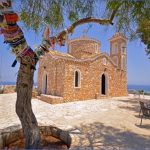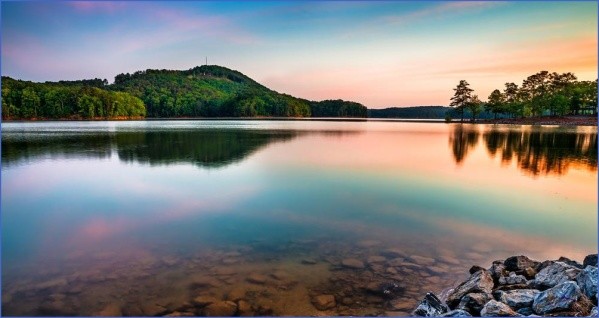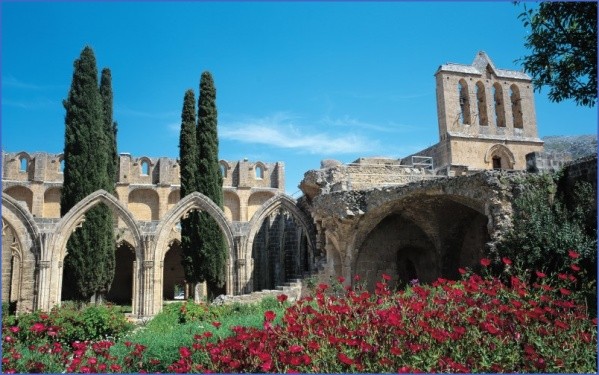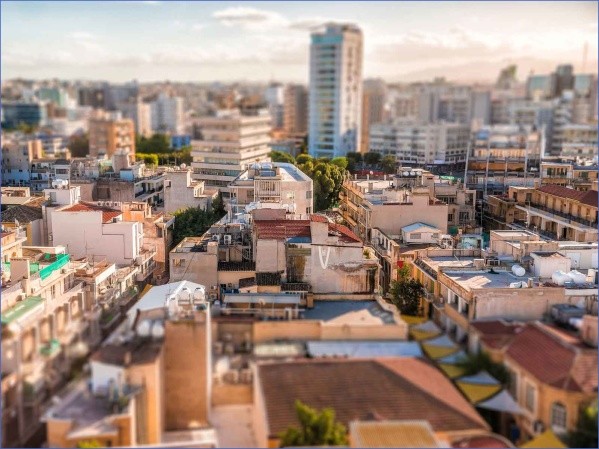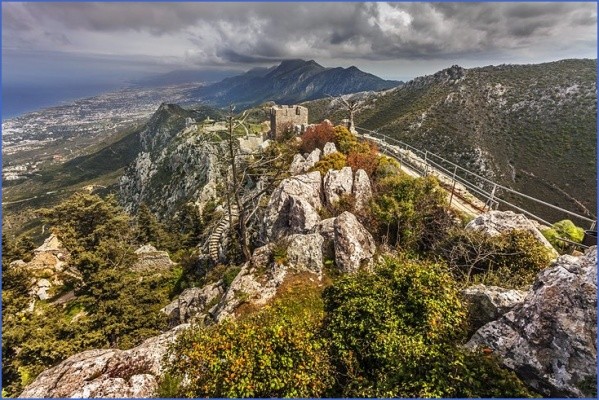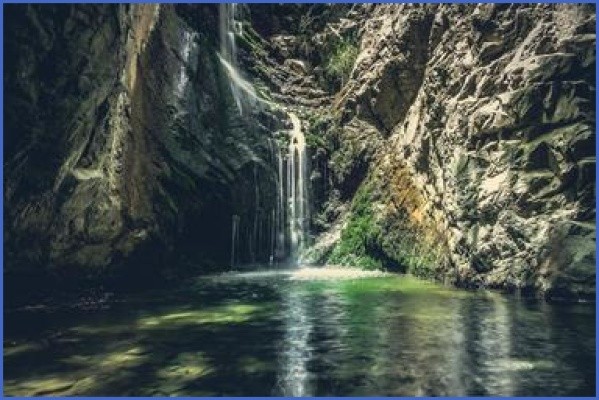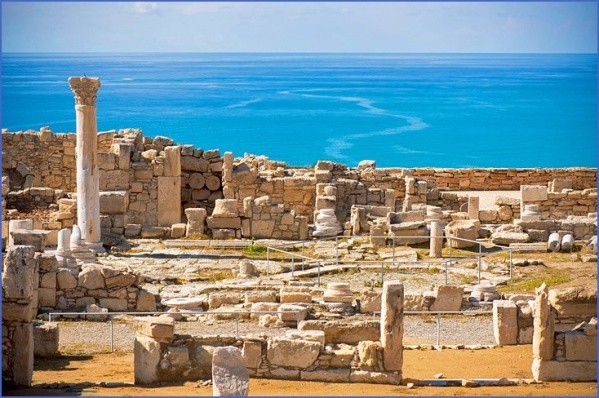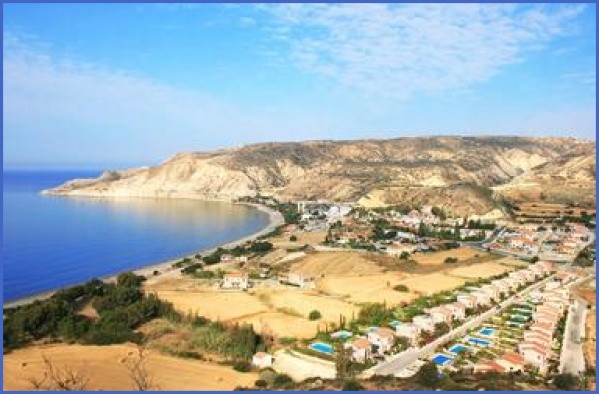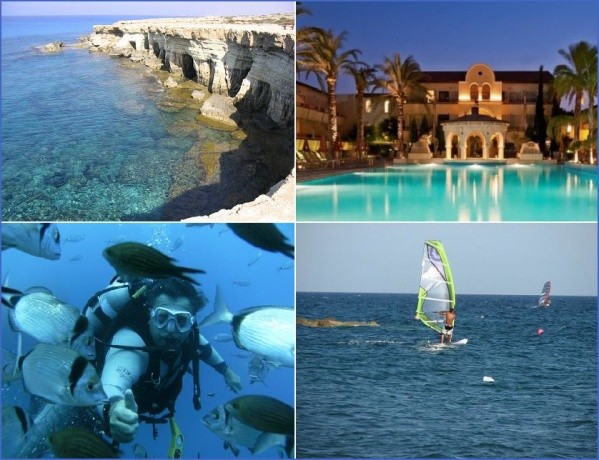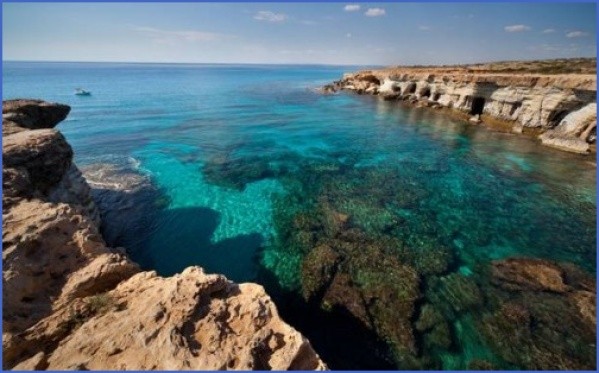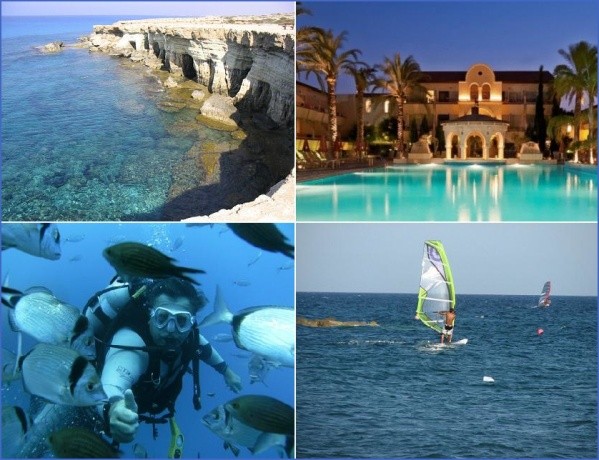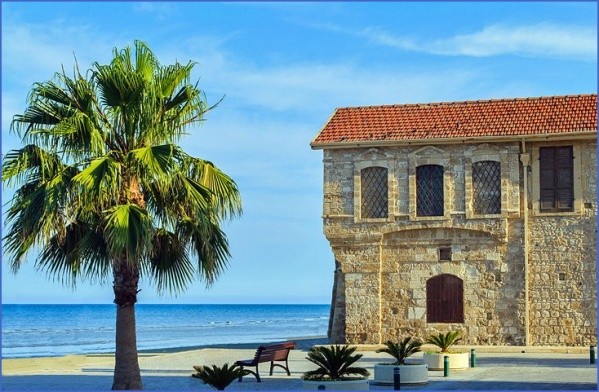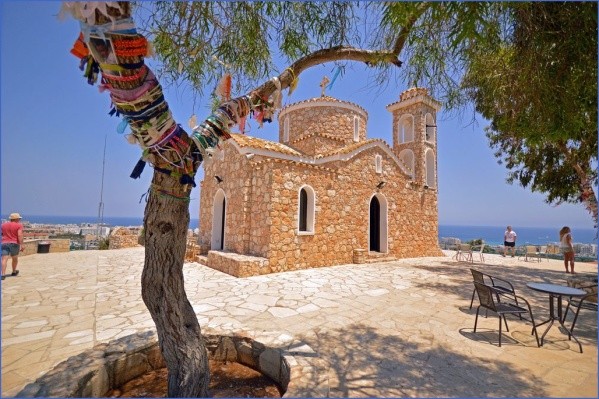Agios loannis, Mesana, Arminou.
Choletria on the ridge between Xeros and Diarizos is a new settlement, removed to its present position in 1974 on account of landslides. The old settlement, on a slope facing Xeros river, is now deserted and uninhabited. On the right bank of the Xeros river, a water-mill still stands in relatively good condition. On a small height, next to the river bed is the Ortos area, where archaeological excavations are being carried out. So far the unearthed findings point out that Ortos was a large settlement, the greatest part of which was eroded away or destroyed by cultivations. It is an aceramic neolithic settlement where thousands of man-made stone objects were found. Most probably it dates back to 5.400 – 4.200 B.C. Stavrokonnou. The village retains a mosque, without a minaret, and uses a still to produce zivania. (local alcohol drink). Kelokedara is no longer the administrative center of the area with manifold services, as it was in the old days. In the last century the village history was associated with notorious robbers and criminals from Mamonia village, who were known as “Hasamboulia”.
“Apostolic olive-trees”, believed to date back to the times of St Paul
Salamiou. A strong tradition is preserved in the village, according to which, while St Paul and St Barnabas were journeying from Salamis to Pafos, they rested here in the middle of the day and took a meal. The olive stones which they threw away grew and became olive trees, now very old with thick trunks, known as “Apostolic olive trees”. The church of Panagia (Madonna) Eleousa, previously a monastery, was built in 1550 and repaired in 1916. According to Kyprianos, the monastery of Eleousa was functioning during the Turkish period. Round the present church grow some oak-trees, which are said to be sacred to the Virgin and must not be cut. Malounta is an abandoned settlement since 1953. Agios loannis, a Turkish Cypriot settlement, basically a wine-producing village, has a mosque without a minaret. Travelling along Agios Ioannis area and Xeros valley during the autumn months, you will often come across a few vultures with quite a few crows flying alongside or sitting on their wings without any fear or danger whatsoever. Mesana. The houses in Mesana are built in the traditional architecture of vine-growing villages with stills in almost all house-yards for the production of zivania (local alcohol drink) and wine. On the bank of the river, about 3km from the village, is the Monastery of Agios Georgios of Komanon, built in the 15th century. The cells do not exist any more, while the arched church preserves some paintings. Arminou. It is not known whether in the past the settlement was inhabited by Armenians, nor is it clear whether the name of the settlement has any relation to the Armenians. The church of the Holy Cross was built in the middle of the eighteenth century. Its chief treasure is a gilted wooden cross, subsequently taken to the new parish church of Agia Marina. It is said that the cross was kept at Souskiou, but came to Arminou of its own volition many years ago. Barsky, the Russian monk who visited Arminou in 1735, writes that in the monastery of the Holy Cross there were a few cells.
d) Along the ridge between Xeros and Ezousa valleys.
Route: Anarita, Foinikas, Nata, Axylou, Eledio, Amargeti, Agia
Marina, Pentalia, Galataria, Faleia, Koilineia, Vretsia
Anarita is engaged in farming and animal raising. Not far from the village lies the ruined Byzantine monastery of Agios Onisiforos, who was born in Constantinople and later became an admiral in the service of the Byzantine Empire. He took part in many battles but finally gave up all positions and power and settled in Anarita as a humble hermit. After his death he was declared a saint, while the place he lived was replaced by a monastery. Not far from the settlement there is a well, plastered inside and surrounded by paved pebbles from the beach, indicating most probably a Venetian origin. Foinikas on the left bank of Xeropotamos, has now been deserted. The large Asprokremmos dam, which was constructed on the Xeropotamos river, next to Foinikas, with a capacity of 51.000.000 c.m., covered a section of the village. Foinikas is known as a village of the Small Commandaria, which included another four villages. Nata is rich in traditional architecture with spacious courtyards, large wine jars and two-storeyed houses. The church of Panagia Eleousa, now in ruins, with its thick walls and traces of frescoes, found on the earthen road towards Agia Marina, is worth visiting. It is a relatively large church, possibly of the Frankish era, testifying that the population in those days was large. Axylou. The initial site of the village was found to be unsuitable, particularly after the catastrophic earthquakes of 1953. Thus, a year later, the settlement was removed to the crest of the ridge between the Ezousa and Xeros rivers. The site of the old church of Agios Alexandros is well known, and the new settlers light candles there, even though it is now a cultivated vineyard. According to Leontios Machairas, three Alaman Saints came and settled in the village: Agios Alexandros, Agios Charetis and one Epifanios. Eledio. The old ruined settlement of Eledio is near the north-west of the new settlement. What is preserved, is the old spring of the village, the half-ruined church of Agia Irini, and some centuries-old olive trees. Amargeti. Tourist apartments and country houses are available in the village, while the road which connects Amargeti with Lemona is used by hikers from the Pafos tourist area. Amargeti is known for the archaeological site of Petros Anthropos, even though a visitor will not come across any excavations or the real site. Inscriptions on the base of statues which were found in the area indicate that Apollo Malanthios was worshipped in the area. The inscriptions, which are dedicated to Apollo Malanthios, date from various eras up to the 3rd century B.C. and belong to the Hellenistic and Roman eras. Agia Marina is a small, picturesque village with an attractive landscape and pine-covered slopes and ravines. The beautiful small houses, built with hewn limestone blocks have recently been whitewashed, to the point that architecture has been violated. Even the church of Agia Marina, which probably dates to previous centuries, has been restored and no longer retains its historical character. In Pentalia there is a remarkable cultural monument, the monastery of Sinti on the west bank of Xeros river.
5 Best Places to Visit in Cyprus Photo Gallery
10 Best Things to Do in Cyprus
The ruined monastery of Sinti, Pentalia
It is not well known when the monastery was built, though its church belongs to the first half of the 16th century. In recent years it was an annex of Kykko monastery. In 1735 the monastery was visited by Barsky, the well-known Russian monk, who described the monastery as very old, square-shaped, with a big courtyard and a well in the middle. He praises the church with its dome and observes that it was built with great dexterity. Today the monastery is in ruins. However, the well in the middle of the courtyard, and the church with cracks on its walls, are still in existence. The east wing of the monastery, and the north wing, look as if they are two-storeyed buildings in comparison with the west wing which consists of ground floor rooms which were used as stables and barns. The single-aisled church with its eight-sided dome possibly belongs to the 16th century. In 1994, Kykko monastery started restoration works in the monastery. Restoration works were initiated in 1994 and by 1998 the monastery with its significant historic and archaeological value was fully restored. In fact it was during the year of the successful restoration that the diploma of Europa Nostra was awarded to the monastery. In Galataria, the visitor can come across three significant places of interest. Firstly, there is the large spring in the “Vlea” area, where the water ends up in an enormous reservoir, from which a relatively large area is irrigated.
Worth visiting is also the church of Panagia Galatousa.
The original church, according to Gunnis, was a 1768 construction with a sun-dial on the north side of the wall. It had some old icons which Greeks and Turks would worship because they believed in her miracles. The church was demolished and very close by a new one was built, also dedicated to Panagia Galatousa. The visitor can finally visit another small arched church, dedicated to Agios Nikolaos, built on a rock, not very far from Xeropotamos. This little church was built in 1550 and still maintains some frescoes, even though the interior of the church has been blackened by smoke from fires lit by shepherds. Faleia. South of Statos-Agios Fotios lies the deserted Turkish-Cypriot village of Faleia. Koilineia. This is a declining village with traditional houses, built with hewn limestone blocks and roofs covered with clay. Vretsia. Perhaps the best route to visit the deserted village of Vretsia is via Agios Nikolaos – Kelefos bridge – Pera Vasa – Roudia bridge. It is a unique and unforgettable route, though the absence of adequate signposts might be a problem. There is, however, a shorter road through Koilineia.
e) Travelling along the Ezousa Valley
Route: Pitargou, Kato Panagia, Kourdaka, Choulou, Lemona
Pitargou. This Turkish-Cypriot village, east of Kallepeia, is now abandoned. Kato Panagia is used in the winter months by Panagia farmers for animal grazing. According to Loizos Philippou, when the Land Registry Code was prepared for the Holy Monastery of Kykko, it appeared that Kato Panagia was an annex of Kykko in 1774. Kourdaka, a Turkish-Cypriot village to the left of the Letymvou-Choulou road, is currently abandoned.
10 Things to Know Before You Go to Cyprus
Church of St. George, Choulou
Choulou. The tall minaret which dominates the village, constitutes irrefutable evidence that this was once a mixed Turkish-Cypriot settlement. The church of Agios Georgios, now restored, about two kilometres west of the village, is single-aisled with a dome and narthex, added later. Initially the entire church was full of frescoes but only a few have survived. The church of Agios Georgios is of the Middle Byzantine era. The church of Agios Theodoros lies within the settlement. It is now in ruins and could possibly date back to the middle of the 12th century. The parish church of Panagia Pantanassa belongs to the 16th century. It is single-aisled, arched, initially frescoed. The fresco of the Virgin Mary is preserved, albeit blackened by smoke. In Choulou and Lemona the song of Arodafnousa, in another version, has survived, which tells the story of the love of the feudal lord of Choulou, Moundolif, for the “Rigaina” (Queen) of Lemona. Lemona lies south of Choulou and east of Ezousa. In the past Lemona was famous for its silk, and even to this day quite a few mulberry trees are still to be seen. A little distance from the village are olive trees which, according to tradition, belong to Archangelos Michail and nobody may cut them or harm them. The tale of Arodafnousa is well known to the inhabitants. The feudal lord of Choulou and the noble lady of Lemona fell in love and their secret love was sung by the inhabitants as an idyl between the Rigas (king) and the Rigaina (queen). Today a place-name with the name of Arodafnousa is preserved within the administrative boundaries of the village.
Route: Melamiou, Kannaviou, Agyia
Melamiou is currently abandoned. Kannaviou. Perhaps it is here, on the banks of Ezousa river, that during the Lusignan and Venetian periods hemp was cultivated, from which the village got its name. The abundant trees and the summer breeze led to the creation of more coffee shops and recreation centers in the settlement than a small village would normally maintain. Recently tourist apartments have been built and they are rented to summer holiday makers. Agyia. The picnic site of Agyia, south of Stavros tis Psokas, in the Pafos forest, is best approached from Kannaviou. To the left of the Kannaviou-Panagia road, where the bridge crosses Ezousa river, there is an asphalted road for about two kilometres and then another earthen road leading to Agyia. The route through the narrow, deep valley of Ezousa, is pleasant and comfortable although in some places the road is narrow. The Agyia picnic site, which can accommodate 200 people, provides benches, a playing area for children, potable water, equipment for barbecue and other basic facilities. Most probably this route can be combined with the route Psathi, Agios Dimitrianos, Lapithiou.
Route: Psathi, Agios Dimitrianos, Lapithiou
Psathi lies on a ridge between Polemi and Kannaviou. It enjoys an extensive view towards many directions. Agios Dimitrianos, east of Psathi, lying on a ridge, is rich in traditional rural architecture. Lapithiou, is currently abandoned.
Maybe You Like Them Too
- Top 10 Islands You Can Buy
- Top 10 Underrated Asian Cities 2023
- Top 10 Reasons Upsizing Will Be a Huge Travel Trend
- Top 10 Scuba Diving Destinations
- World’s 10 Best Places To Visit


